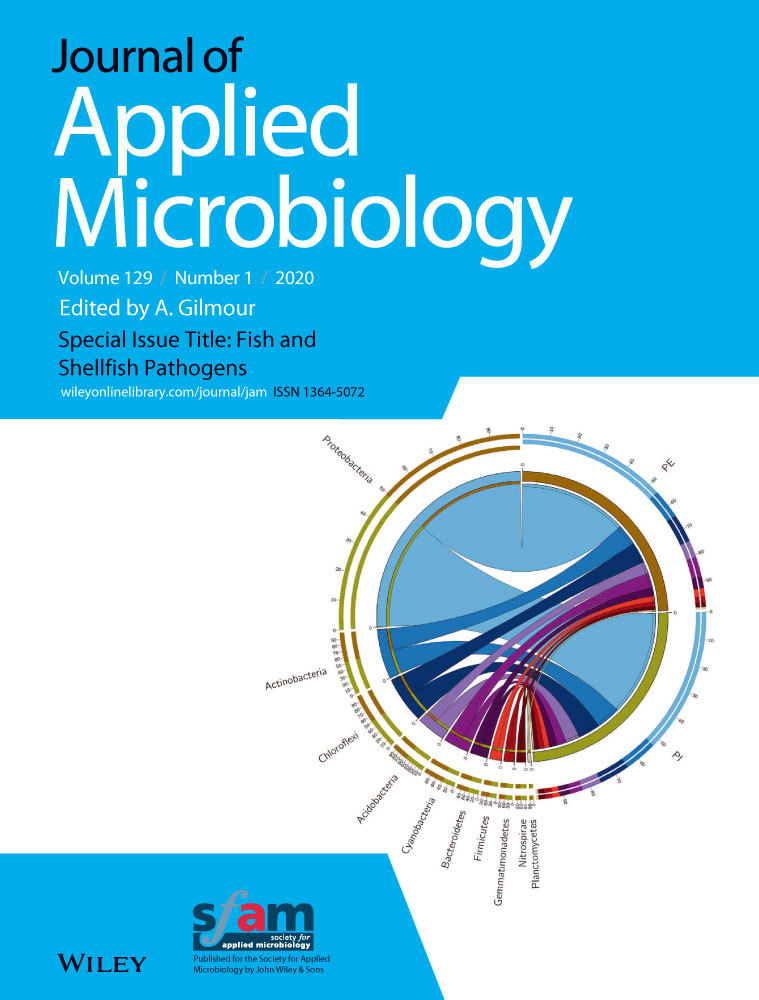Ver ítem
- xmlui.general.dspace_homeCentros Regionales y EEAsCentro Regional Santa FeEEA RafaelaArtículos científicosxmlui.ArtifactBrowser.ItemViewer.trail
- Inicio
- Centros Regionales y EEAs
- Centro Regional Santa Fe
- EEA Rafaela
- Artículos científicos
- Ver ítem
Technological variables influencing the growth and stability of a silage inoculant based on spray‐dried lactic acid bacteria
Resumen
Aims: To investigate the influence of different culture media and fermentation conditions on growth performance and viability of three lactic acid bacteria (LAB) strains with potential as silage inoculants, and to optimize spray‐drying in order to enhance survival to dehydration and storage stability.
Methods and Results: In house‐formulated MRS was a suitable low‐cost culture medium for Lactobacillus plantarum Hv75, Pediococcus acidilactici 3903 and L.
[ver mas...]
Aims: To investigate the influence of different culture media and fermentation conditions on growth performance and viability of three lactic acid bacteria (LAB) strains with potential as silage inoculants, and to optimize spray‐drying in order to enhance survival to dehydration and storage stability.
Methods and Results: In house‐formulated MRS was a suitable low‐cost culture medium for Lactobacillus plantarum Hv75, Pediococcus acidilactici 3903 and L. buchneri B463. Uncontrolled pH biomass production conferred enhanced stability during storage at 4 °C after spray drying. The use of whey protein concentrate 35 (WPC)‐maltodextrin (M) as matrix, inlet temperature of 145‐150 °C and air flow rate of 601 l h−1 was adequate for the production of dehydrated LAB. According to the desirability function, at this optimized condition, moisture content, yield and solubility were predicted to be 3.96%, 73.68%, and 90.36% respectively. Those conditions also showed a decrease of 0.855 log CFU g‐1 after drying, no loss in viability at 4 °C for 6 months and 1 log CFU g‐1 reduction at 25 °C.
Conclusions: Stable and economically feasible dehydrated LAB cultures were obtained by using alternative culture media, fermentation under uncontrolled pH, and optimizing spray‐drying process conditions through the desirability function method.
[Cerrar]

Autor
Blajman, Jesica;
Vinderola, Celso Gabriel;
Cuatrin, Alejandra;
Lingua, Mariana Soledad;
Paez, Roxana Beatriz;
Fuente
Journal of Applied Microbiology (First published:16 June 2020)
Fecha
2020-06
Editorial
Wiley
ISSN
1364-5072
1365-2672
1365-2672
Formato
pdf
Tipo de documento
artículo
Palabras Claves
Derechos de acceso
Embargado
 Excepto donde se diga explicitamente, este item se publica bajo la siguiente descripción: Creative Commons Attribution-NonCommercial-ShareAlike 2.5 Unported (CC BY-NC-SA 2.5)
Excepto donde se diga explicitamente, este item se publica bajo la siguiente descripción: Creative Commons Attribution-NonCommercial-ShareAlike 2.5 Unported (CC BY-NC-SA 2.5)

